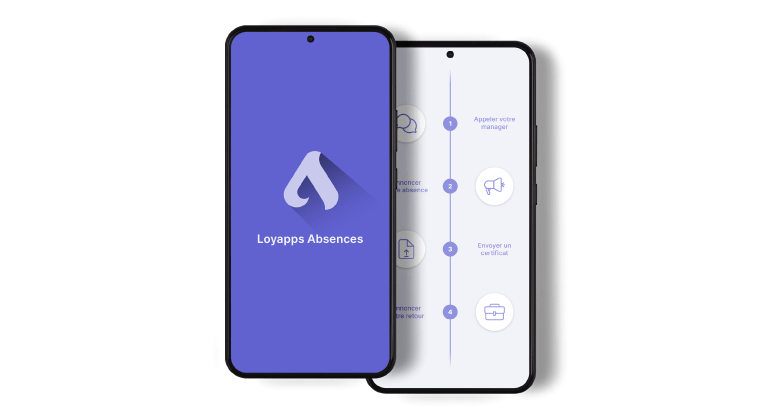
Flexible working hours: possibilities and legal framework
In an environment where fluctuating workloads are commonplace, anticipating and flexibilizing working hours can prove useful for employers. How can you ensure compliance with legislation while meeting your company’s needs? Our partner CJE, Avocats, Conseillers d’Entreprises, examines the legal rules and possibilities in terms of overtime, breaks and flexible working hours, to ensure efficient and compliant management of working time.
Contents
- Overtime, time registration and breaks: what you need to know
- Annualization of working hours
- Collective labor agreements (CLA)
Overtime, time registration and breaks: what you need to know
Before detailing the options for flexible working hours, here’s a reminder of the key rules on overtime, time recording and compulsory breaks.
Overtime – extra work
Overtime represents the time worked between the contractual weekly working hours and the maximum weekly working hours as defined in the French Labor Law (LTr). They are generally remunerated with a supplement of 25%, but other rules may be contractually agreed. Overtime occurs when the maximum working week authorized by the LTr is exceeded, i.e. 45 or 50 hours depending on the activity. Overtime may only be performed in exceptional circumstances, and only if no other measures can reasonably be envisaged. These must be extraordinary situations, arising unexpectedly or which cannot be managed in the short term in any other way with the resources available. When remunerated, overtime work entitles the employee to a supplement of 25%.
Time registration
When the Contrat is subject to the LTr, there is a legal obligation to record working hours. Under certain conditions, however, the law provides for simplified recording of working hours, as well as the possibility of dispensing with such recording, but these are exceptions.
Mandatory breaks under the Labour Act
In application of the LTr, work must be interrupted in the middle of the working day by an unpaid break of:
- 1/4 hour, when the working day lasts more than 5h30.
- 1/2 hour, when the working day lasts more than 7h00.
- 1 hour, when the working day lasts more than 9h00.
Maximum working day
The law does not specify a maximum daily working time. It is therefore generally accepted that it can be determined as follows:
- The maximum working day is 14 hours.
- 14 hours lasts longer than 9 hours, requiring a 60-minute break in the middle.
- This leaves 13 hours that can be split into 2 x 6.30 hours.
- Each 6.30-hour shift entitles the employee to a 15-minute break.
- This leaves two times 6h15 of work.
- This means that the maximum total daily working time is 12.30 hours.
Annualization of working hours
Employers will annualize working hours when their business is seasonal and predictable. In this way, the employer can determine for each month, or even each week, the schedule that the employee will have to work, and inform his or her employees at the end of the year for the coming year. For example, if the average schedule is 40 hours, employees will know that in January the schedule will be 35 hours, in May 40 hours and in July 45 hours.
Determining annual working hours
If the average working week is 40 hours, the annual working week will be determined as follows:
365 days: 7 = 52.14 weeks X 40 hours = 2,086 (rounded)
To arrive at the total of 2,086 hours, public holidays, vacations, individual days of absence due to illness, accident or other absences are deducted per day on the basis of scheduled working hours.
Working hours calendar
Next, the employer will draw up a working hours calendar indicating precisely for each week, or even each day, the schedule to be worked, and any bridges or company closures to be made up. If the employer decides to close the company on certain days (e.g. Ascension Friday) or during certain periods (e.g. between Christmas and New Year’s Eve), he will add to the annual timetable (2,086 hours) the hours that would normally have to be worked on the days not worked. The annual timetable is therefore equal to the annual timetable according to the average timetable, to which we add bridges and company closures to be made up.
Flexible working hours
When it is not possible to predict the exact time to be worked due to peaks and troughs in workload, it will be necessary to plan for flexible working hours. In the case of flexible working hours, the employer generally makes provision for the following points:
- the range within which the schedule can fluctuate (e.g. between 35 and 45 hours);
- the number of days over which the schedule must be completed (e.g. minimum 32 hours over 4 or 5 days, maximum 50 hours over 5 days);
- the schedule according to which holidays and absences are paid (generally according to the average time worked);
- the employee’s involvement in planning the work schedule;
- monthly validation by the employee of the hours tallied, with bonus/malus details at the end of each month;
- the treatment of positive hours at the end of the year (carryover up to a certain limit and payment of hours in excess of the limit);
- the treatment of negative hours at the end of the year (carried forward up to a certain limit, with the employer assuming responsibility for hours in excess of the limit).
Free schedule
An employee may exceed or reduce the working hours set by the employer for personal reasons, subject to the legal limits and those set by the employer. This is known as “variable hours”. When an employee is entitled to free working hours, the calendar year is taken as the reference period. The employee is free to determine the length of his or her daily working hours, provided that by the end of the reference period, which is the calendar year, he or she has completed the number of hours contractually due. The compulsory attendance hours (blocked periods) set by the employer must be respected, while the employee is free to organize the rest of the time.
Important distinction: overtime, additional working hours and annualized working hours are imposed by the needs of the business and/or according to the employer’s directives, whereas the excess balance resulting from flexible working hours is freely accumulated by the employee.
Employers generally set limits on negative and positive flexitime hours, which can be carried forward to the end of a month or calendar year.
Collective labor agreements (CLA)
Some CLAs provide for annualization of working hours and flexible working arrangements.
Flexible working hours – what you need to know
To ensure efficient management of working hours while complying with legal obligations, it is essential that employers implement systems tailored to the nature of their business. Whether it’s managing overtime, ensuring correct recording of working hours, or enforcing compulsory breaks, compliance with the French Labor Law (LTr) is crucial.
To limit the risk of misunderstandings, or even disputes, it is strongly recommended that employers plan the type of working hours for their company, and even more specifically for each sector of the company (production – administration – etc.) according to their needs.
This article was written by our partner CJE, Lawyers, Business Consultants.

















